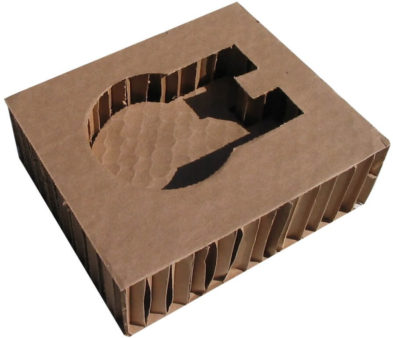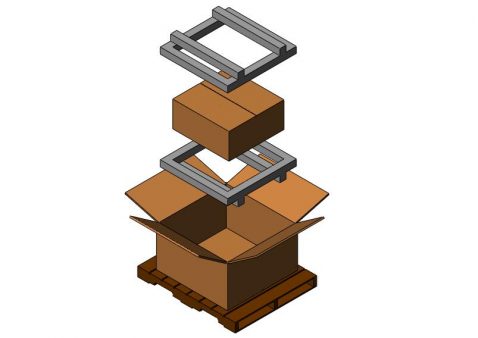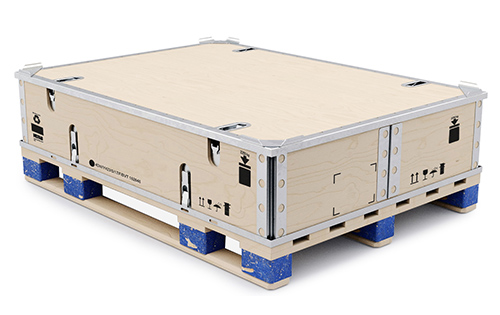Eco-Friendly Practices: Driving Adjustment with Bulk Container Recycling
Wiki Article
Effective Industrial Recycling Solutions for Sustainable Product Packaging: A Comprehensive Guide
That's where this detailed guide on effective commercial recycling remedies for lasting product packaging comes in. By checking out key areas such as product packaging material choice, designing for recyclability, applying recycling facilities, teaming up with recycling companions, and monitoring and gauging reusing success, this guide will certainly equip you with the expertise and devices needed to make educated decisions and drive favorable change within your organization. Whether you're a packaging professional, sustainability manager, or just interested in the topic, this guide will certainly provide important insights and strategies to assist you browse the globe of lasting product packaging.Packaging Product Option
The selection of product packaging products plays a crucial function in ensuring the sustainability of industrial recycling solutions. The selection of products is essential in lessening environmental effect and taking full advantage of reusing effectiveness when it comes to lasting product packaging. Choosing the right materials can assist minimize waste generation, preserve resources, and promote a round economic climate.Products like cardboard, paper, glass, and particular types of plastics can be reused numerous times without losing their quality. On the other hand, materials that are challenging to reuse, such as non-recyclable composites or blended plastics, can develop difficulties for the reusing procedure and might finish up in garbage dumps or incinerators.
Another factor to consider is using naturally degradable and sustainable products. Product packaging made from sustainable resources, such as plant-based plastics or biopolymers, can help in reducing dependency on nonrenewable fuel sources and alleviate environment change. Additionally, naturally degradable products break down naturally with time, minimizing the accumulation of waste in land fills.
Furthermore, the weight and volume of product packaging products must be decreased to decrease transportation costs and energy consumption. Lightweight materials not only require less sources during production yet also contribute to decrease carbon exhausts during transportation.
Designing for Recyclability
In order to guarantee the recyclability of packaging materials, thoughtful layout is important. Designing for recyclability includes developing packaging that can be easily arranged, separated, and refined in reusing facilities. One essential facet of making for recyclability is the choice of products. Product packaging developers should prioritize the use of materials that are extensively accepted for reusing and have developed reusing frameworks. Materials such as glass, light weight aluminum, and specific kinds of plastic, like animal and HDPE, are generally recycled and should be chosen over materials that are expensive or tough to reuse.Another critical consideration in developing for recyclability is the removal of unnecessary parts or materials. By decreasing the variety of layers, finishes, and additional components, product packaging can be made simpler and easier to reuse. Furthermore, developers ought to intend to minimize the use of combined materials, as they can make complex the recycling procedure.

Implementing Recycling Infrastructure
Effective implementation of recycling infrastructure is crucial for the success of commercial recycling solutions. Without appropriate framework in area, the reusing process becomes inefficient and ineffective, impeding the total goal of lasting packaging.To implement reusing facilities successfully, numerous essential elements need to be thought about. There ought to be a well-organized collection system that helps with the separation and collection of recyclable materials. This can include assigned recycling bins in public spaces, as well as collaborations with waste management firms for curbside pickup and sorting.
When collected, the recyclable products need to be transferred to reusing facilities in a prompt way. This needs efficient logistics and transportation networks, making sure that the products reach the appropriate facilities right away.
At the reusing facilities, progressed sorting and processing modern technologies need to remain in place to divide different sorts of materials effectively. This consists of making use of automated arranging makers, optical scanners, and manual sorting strategies.
Moreover, there ought to be a durable market need for recycled products. This can be attained with partnerships with manufacturers and markets that use recycled materials in their production procedures. Producing a stable market for recycled products incentivizes the recycling sector and advertises the circular economic situation.
Working Together With Recycling Partners

One trick aspect of collaborating with recycling partners is the facility of clear communication channels. It is necessary to develop open lines of interaction to promote the exchange of details, updates, and feedback. This enables both celebrations to remain educated concerning the progression of reusing Get More Information campaigns and resolve any obstacles or concerns that may arise.
Furthermore, partnership can include collaborations in carrying out and developing reusing programs. Reusing partners can provide valuable insights and assistance in developing efficient collection systems and establishing the most suitable recycling modern technologies. By collaborating, services and reusing companions can optimize the reusing process and decrease waste.
Moreover, cooperation can prolong beyond the operational elements of recycling. It can also include campaigning for and education campaigns. By signing up with pressures, organizations and reusing partners can elevate awareness regarding the value of reusing and promote the adoption of sustainable product packaging practices amongst customers and various other stakeholders.
Tracking and Measuring Recycling Success
To make sure the effectiveness of commercial recycling solutions and the success of sustainable packaging objectives, it is important for organizations and their reusing companions to establish a detailed system for tracking and gauging recycling success (bulk container recycling). More Help Tracking and gauging recycling success enables businesses to evaluate the impact of their recycling efforts, identify areas for renovation, and established purposeful targets for future developmentOne method to track reusing success is with the usage of information collection and analysis tools. By gathering information on the quantity of product packaging waste produced, the portion of waste that is recycled, and the sorts of materials being reused, businesses can get valuable understandings into their recycling performance. This information can then be examined to recognize fads, patterns, and locations of inefficiency.
Another important element of tracking and determining reusing success is developing standardized and clear metrics. This allows companies to contrast their efficiency against industry standards and track their progression gradually. Metrics such as recycling prices, waste diversion prices, and greenhouse gas emissions can provide a measurable step of a company's recycling success.

Verdict
To conclude, carrying out effective industrial recycling remedies for sustainable product packaging calls for cautious consideration of product packaging product choice, designing for recyclability, executing recycling framework, working together with recycling companions, and tracking and gauging recycling success. By including these methods, businesses can add to a more environmentally-friendly and lasting strategy to packaging, minimizing waste and promoting the circular economy.By exploring key locations such as packaging product choice, making for recyclability, executing reusing facilities, working together with recycling partners, and monitoring and determining reusing success, this guide will equip you with the understanding and tools essential to make informed decisions and drive favorable modification within your company. Product packaging designers ought to focus on the use of materials that are widely accepted for reusing and have actually established recycling frameworks.Partnership with reusing partners is vital for the successful execution of commercial recycling options and the achievement of sustainable packaging goals. By joining forces, businesses and reusing partners can raise awareness concerning the importance of reusing and promote the adoption of sustainable product packaging methods amongst consumers and other stakeholders.
By gathering data on the amount of product packaging waste produced, the percentage of waste that is reused, and the kinds of materials being reused, organizations can acquire beneficial understandings into their recycling efficiency.
Report this wiki page